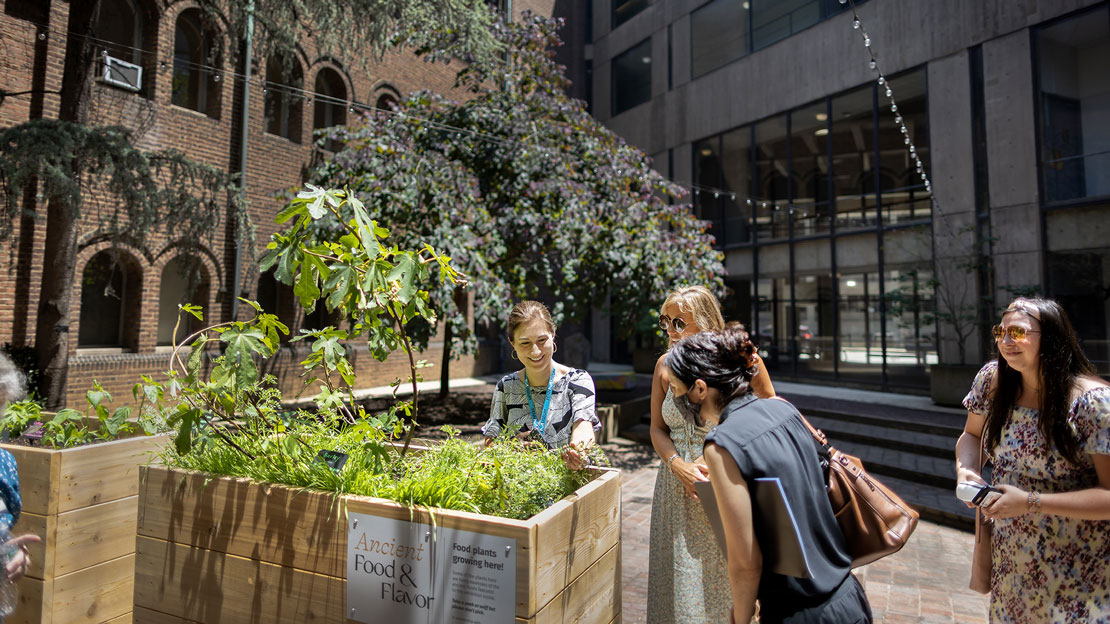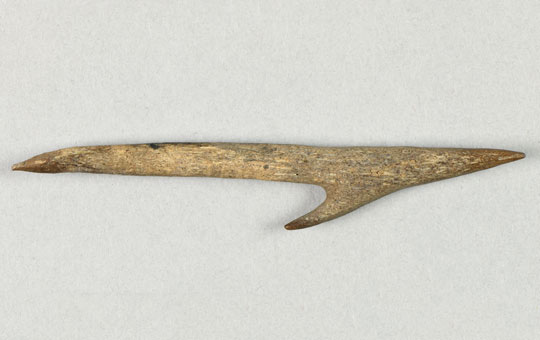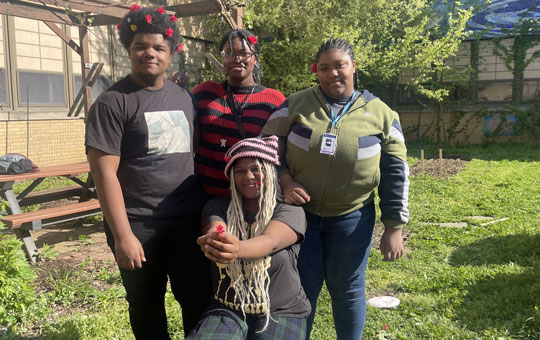Ancient Food & Flavor
Unwrap prehistoric leftovers to learn about what ancient communities were growing, eating, and drinking.
Lower Level
Included with Museum Admission

Unwrap prehistoric leftovers to learn about what ancient communities were growing, eating, and drinking.
Lower Level
Included with Museum Admission

If we are what we eat, who were we?
What can burned seeds, dried meats, or waterlogged fruits, remarkably preserved for thousands of years, tell us about the past?
Food remains are tiny treasure troves of data that reveal information about people’s decisions, diets, activities, and traditions. Archaeologists study these ancient remains to reconstruct the landscapes that produced them, revealing untold histories and forging connections to the past.
Find out what archaeologists have learned about what ancient people were growing, eating, and drinking, based on evidence left behind at three sites.



Waterlogged houses and surfaces at this 6,000-year-old site in present-day Switzerland revealed fishing tools, food remains, and more.
Prehistoric harpoon point from present-day Switzerland. 65-25-79
This 4,500-year-old community in present-day Jordan contained carbonized plant material that suggests wine production and grain storage.
A Bronze-age bowl from a site in present-day Jordan. 2007-10-9
The desert landscape of this 1,800-year-old city in present-day Peru preserved corn, potatoes, cloth, basketry, and wood.
Potatoes from the site of Pachacamac, present-day Peru. 31187
We want to hear from you. Share your favorite food––a meal, recipe, ingredient or vegetable garden! Send us a photo or video with a short caption, and it could appear in the exhibition! Two ways to share:
Post it on social media using #TimelessFlavor and tag @pennmuseum. Not on social? Email it to
Your Food Story
Storytelling through the Photography of Community Landscapes

In collaboration with the Netter Center’s Community Partnership program Agatston Urban Nutrition Initiative (AUNI), Your Food Story introduces Sayre High School students to nutrition, urban gardening, and food heritage through Museum research and educational initiatives connected to Ancient Food & Flavor. An opportunity to lift youth voices in museum exhibitions and cultivate career pathways for young people in the arts and sciences, this six-week pilot program begins with student workshops culminating in pop-up tours and a photography display. Funded by a community partnership grant from the Sachs Program For Arts Innovation.
Students from Sayre High School will be interpreting parts of Ancient Food & Flavor as pop-up tours during the Museum’s Garden Jams program on July 26.
This program concludes with a pop-up student photography display, allowing students to highlight their own food stories from their families and local communities. It will be on view in the Ancient Food & Flavor exhibition starting August 12.